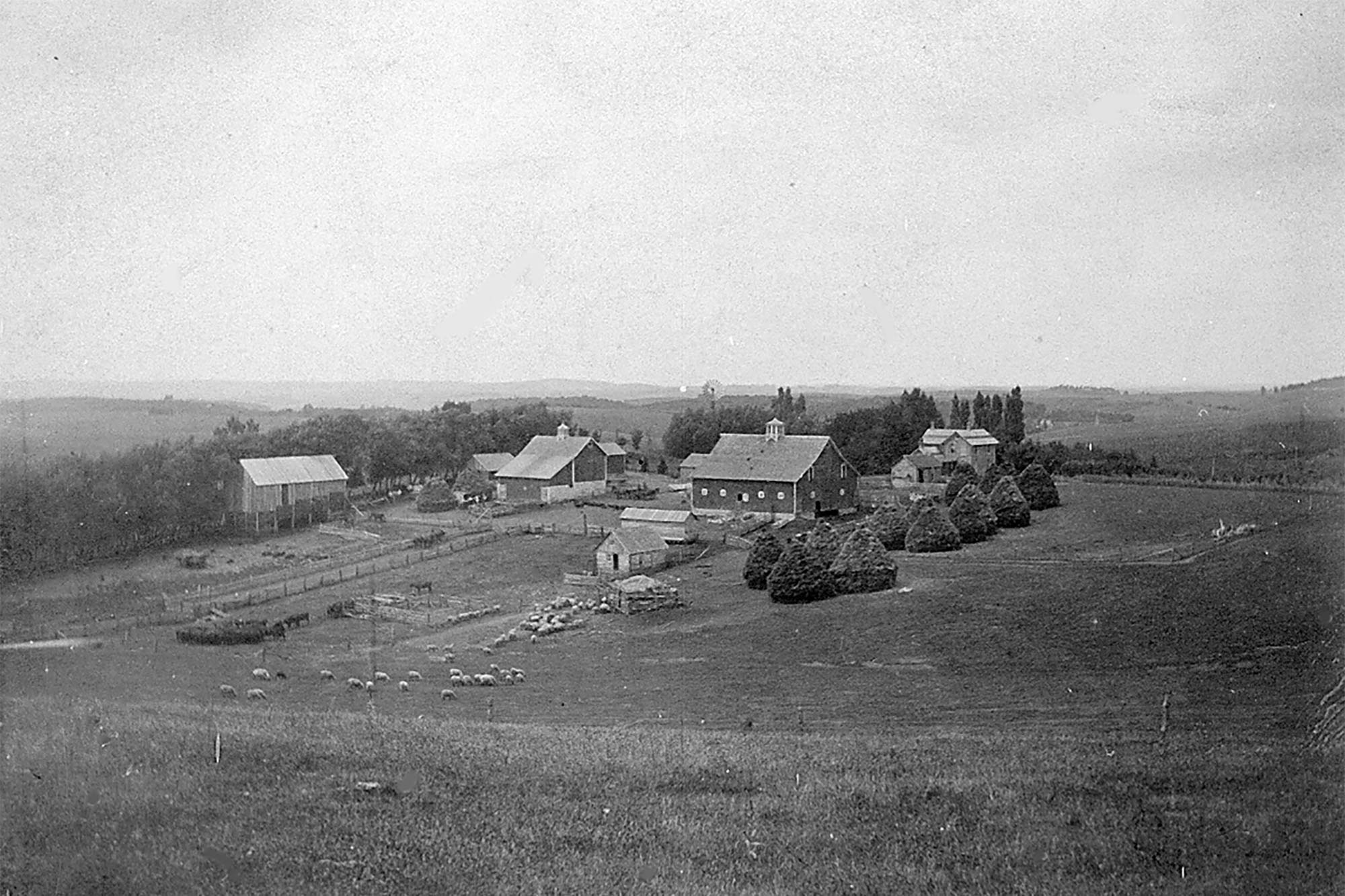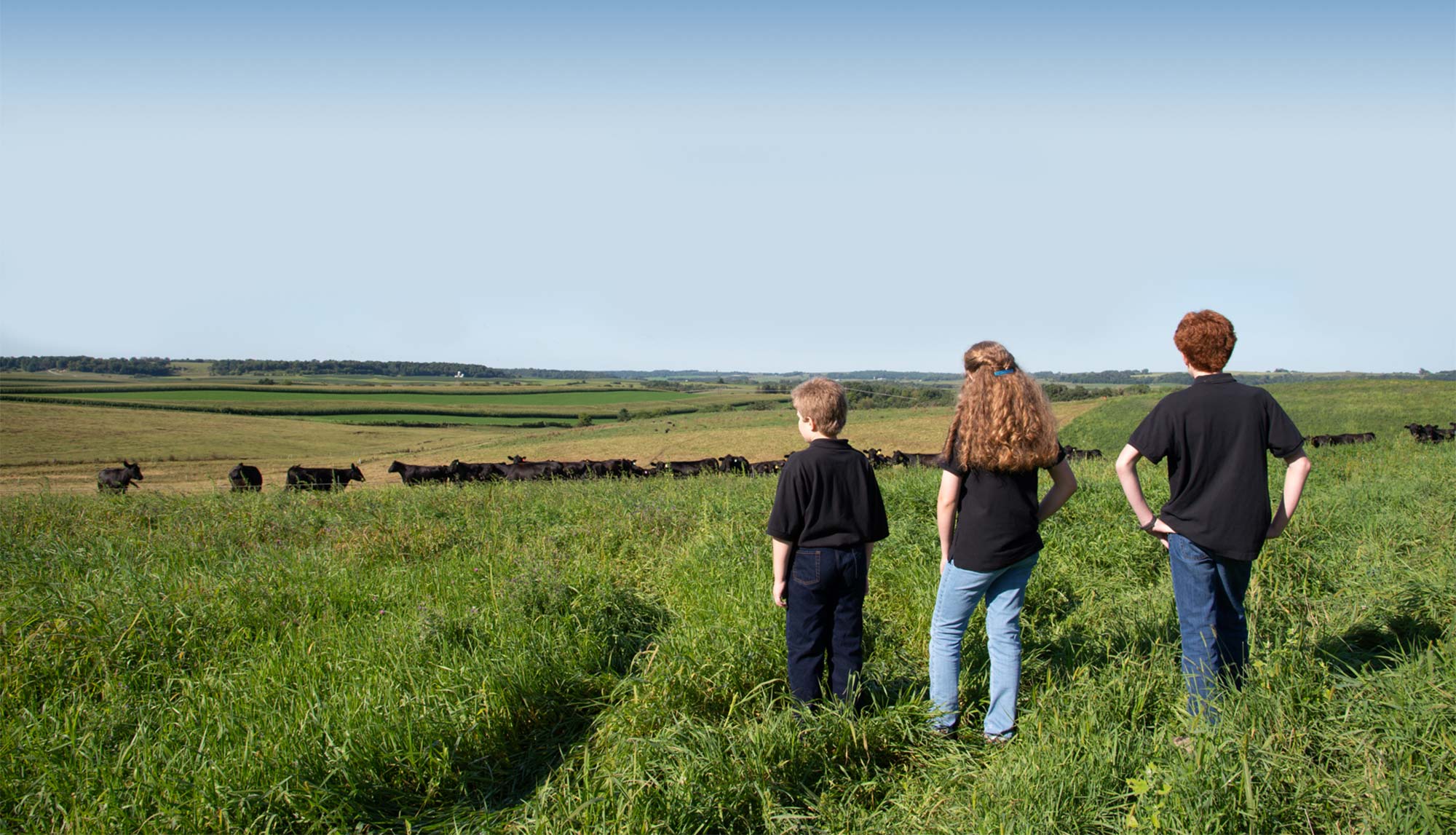Our Story
The history of Sunnyslope Angus began in 1849 when a young boy, Iver, left his Norwegian homeland to seek a better life in the Promised Land called America. He and his family endured a perilous voyage across the Atlantic to create a fresh start in the fertile soils of the Midwestern frontier. The European immigrants became American pioneers and farmed in Iowa for seven years before moving north to the Minnesota Territory. In 1863 Iver started purchasing parcels of land from the Southern Minnesota Railroad, establishing the farm that is known today as Sunnyslope Angus.
Iver died shortly after the birth of his only child, a son, who grew up to continue the work his father began. Taking over management of the farm in 1890, Peter Abrahamson experienced the transition of Minnesota agriculture from mere subsistence farming to business farming. During his stewardship of the farm, Peter built most of the buildings one sees today. He also established many enterprises: Percheron horses, Poland China swine, Shropshire sheep, White Wyandotte chickens, Shorthorn cattle and dairy cows.
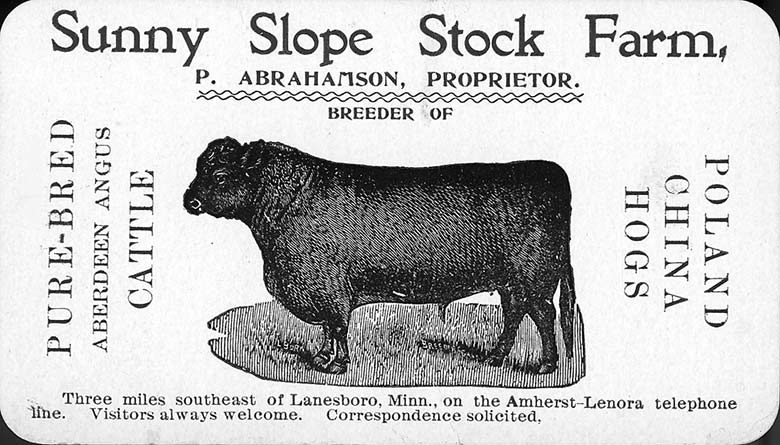
The Herd is Founded in 1898
Though Peter loved his various stock, his pride and joy was his herd of black Angus cattle, which he founded in 1898. Peter purchased an Angus bull (Duke of Lanesboro, 27152) from John Milne of Prosper, Minnesota–the first importer to Minnesota of black Angus from Scotland–and an Angus heifer (Ivy of Canton, 26004) from James Donald of Canton, Minnesota. (Their pedigrees can be viewed on the Angus Association’s website today.)
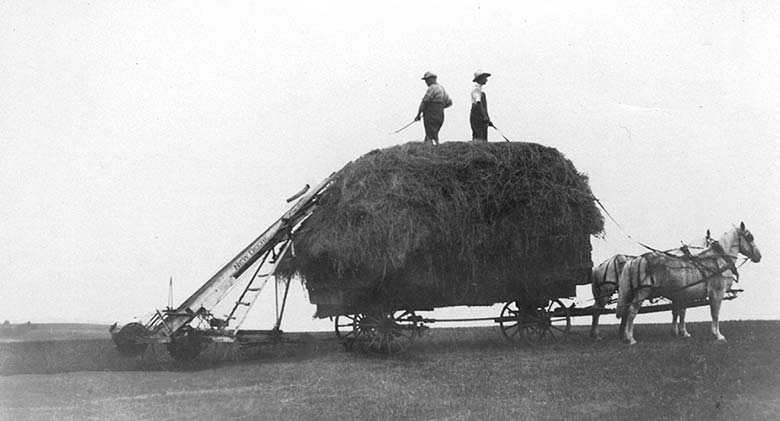
The farm’s first registered Angus were sold in 1900. By 1902 the herd had grown to over thirty head. Throughout Peter’s collection of farm diaries are notations of when people inquired about the Angus, the bulls he sold, trips he took with or for the animals, and when a cow gave birth. Quite often, cattle buyers would call on the farm, stay overnight, pick out their animal the following day, build a crate, and ship it home by railroad express. In the winter of 1903, Peter actually delivered four young bulls to farmers in the Spring Valley area by sleigh–a 60-mile round trip.
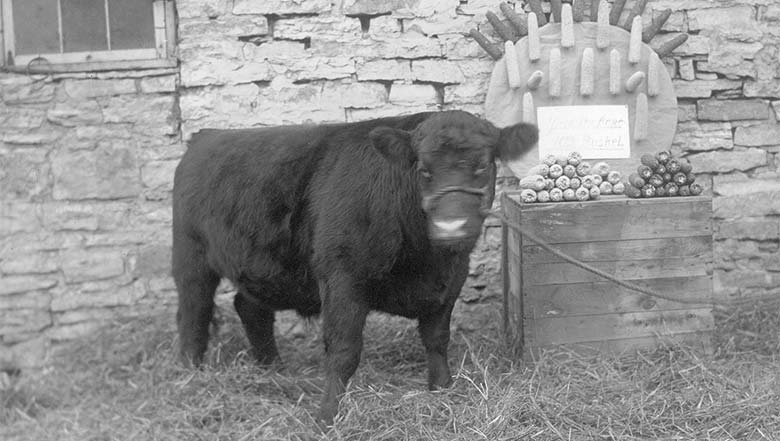
Peter traveled often to Angus sales and meetings, and in 1915 he was instrumental in launching the Minnesota Angus Association, serving as its first secretary. An early 1900s newspaper profile claimed, “Pete never gives you a ‘bum steer’ and is always on deck with the right kind of bull.” He took a leading interest in movements that advanced the welfare of the American farmer, and his obituaries described him as “a great Angus man.”
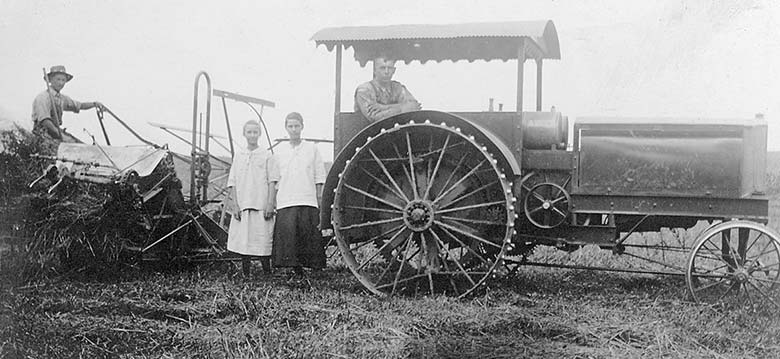
One of Peter’s sons, Arnold, took over the management of Sunnyslope in the 1940s. Farming was transitioning into an era of specialized production; farmers would prove most efficient and productive if they concentrated on one enterprise. Arnold gradually phased out his father’s many livestock enterprises and focused solely on the 50-cow herd of Angus cattle. His only child, Philip, followed in his footsteps.
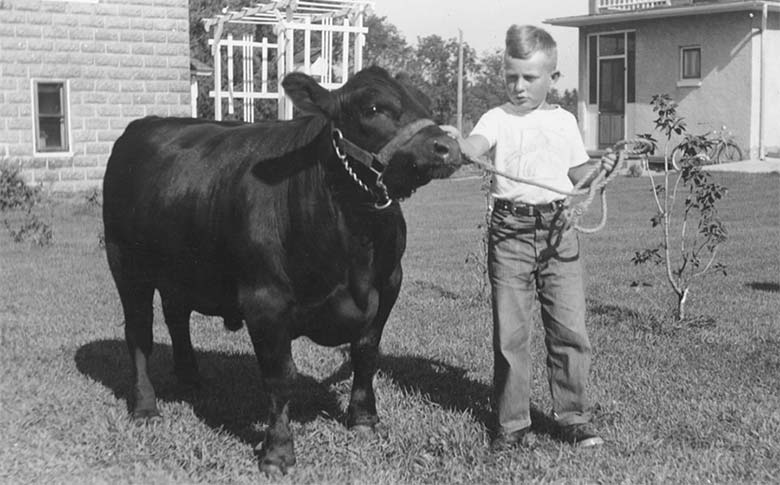
Performance Testing
The highlight of Phil’s 50-year career has been guiding the herd of Angus cattle into the exciting arena of performance testing. In 1960 he joined the Angus Association’s Angus Herd Improvement Record program. He also became the first breeder to work with University of Minnesota staff to develop a method for creating genetic advancement of his Angus cattle through scientific measurement rather than through aesthetic, visual perspective. Birth weights, weaning weights, yearling weights, and grades were recorded on each animal, and the American Angus Association calculated a performance ratio for each bull and heifer based on that data.
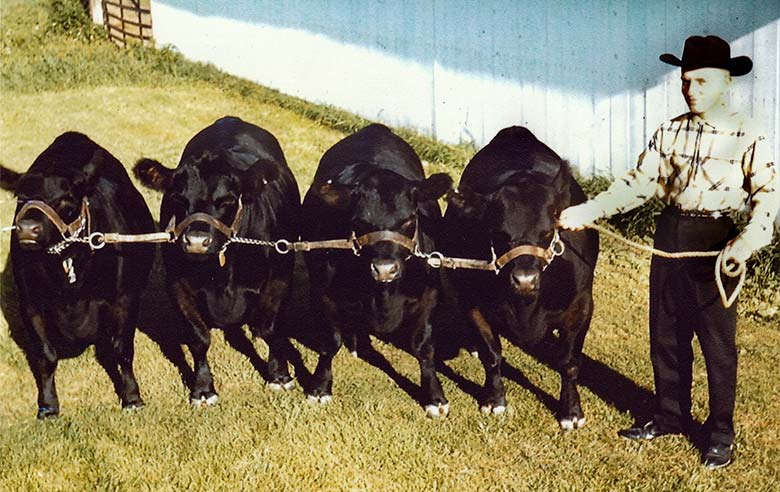
Though it was sometimes controversial in those early years, Phil believed performance testing was a way to the future. He hosted field days to demonstrate techniques and educate other agriculturalists on its advantages, and he participated in a video with other farmers who were trying this new system of improving herd genetics. He was one of three beef producers invited to the American Angus Association to tell the field men about the importance of performance testing, as many were skeptical at the time. After they entered the meeting room, the secretary of the association locked the doors behind them and told the field men, “You’re going to listen to these guys!”
Gradually, scientific data began to replace subjective data. As the testing evolved over the years, expected progeny differences (EPDs) yielded objective, measurable differences between animals and allowed comparisons between herds.
Production Sales
In 1978 Phil and his wife, Ruth, held Sunnyslope’s first annual production sale.
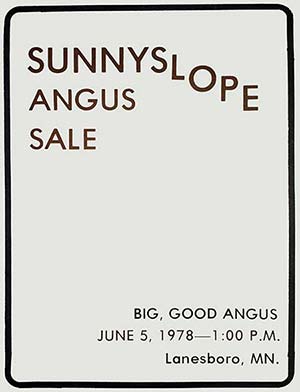
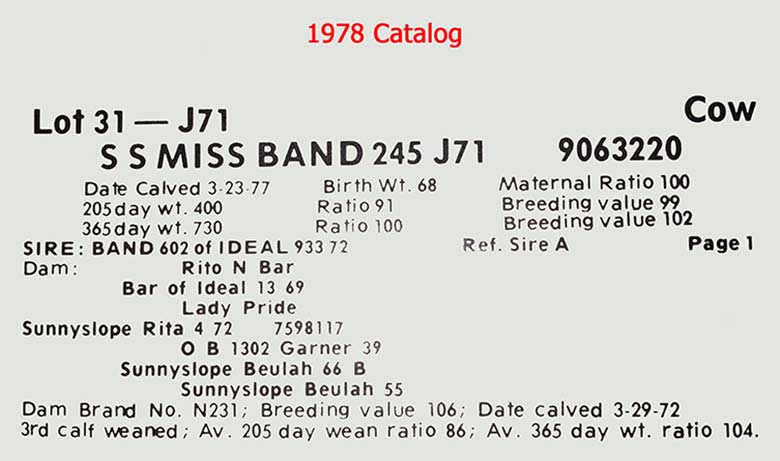
In 2022 they celebrated Sunnyslope’s 45th annual production sale.
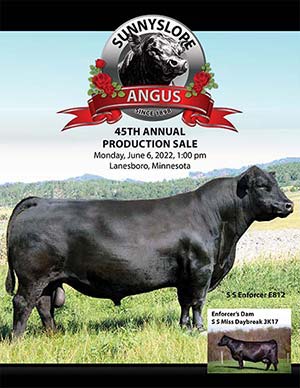
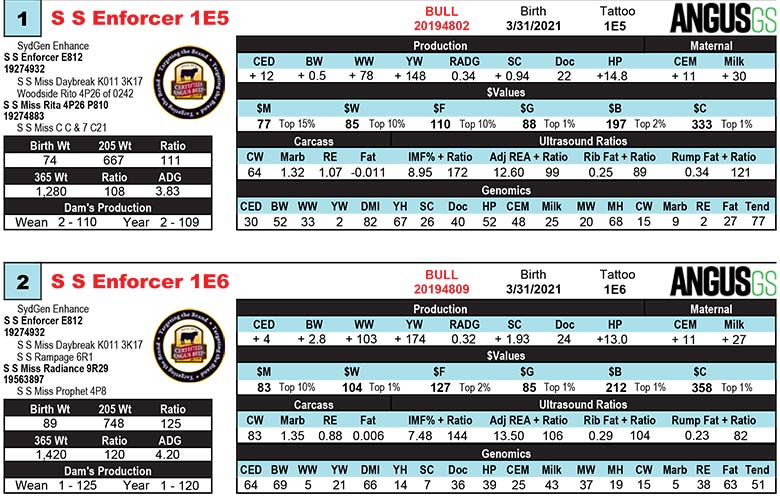
Over the years Sunnyslope’s breeding program has produced a number of bulls which have made their mark on the industry such as:
- S S Rito 8221 X01 (“Super X”)
- S S Rito 0715 OH3 (“The Mathematician”)
- S S Traveler 6T6
- S S Traveler 6807 T510
- S S Objective 0T26
- S S Fast Track M719
- S S Absolute B66
- S S Odyssey H71
- S S Enforcer E812
- S S Enterprise E84
- S S Command E88
- S S Voyage
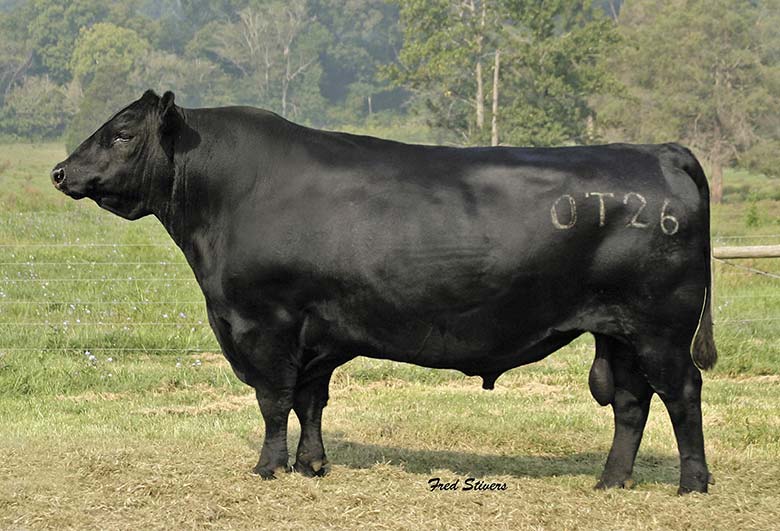
The Focus of Sunnyslope’s Program
In 2010 Phil and Ruth’s daughter, Julie, and her husband, Keith Ekstrom, joined the operation, along with their children.
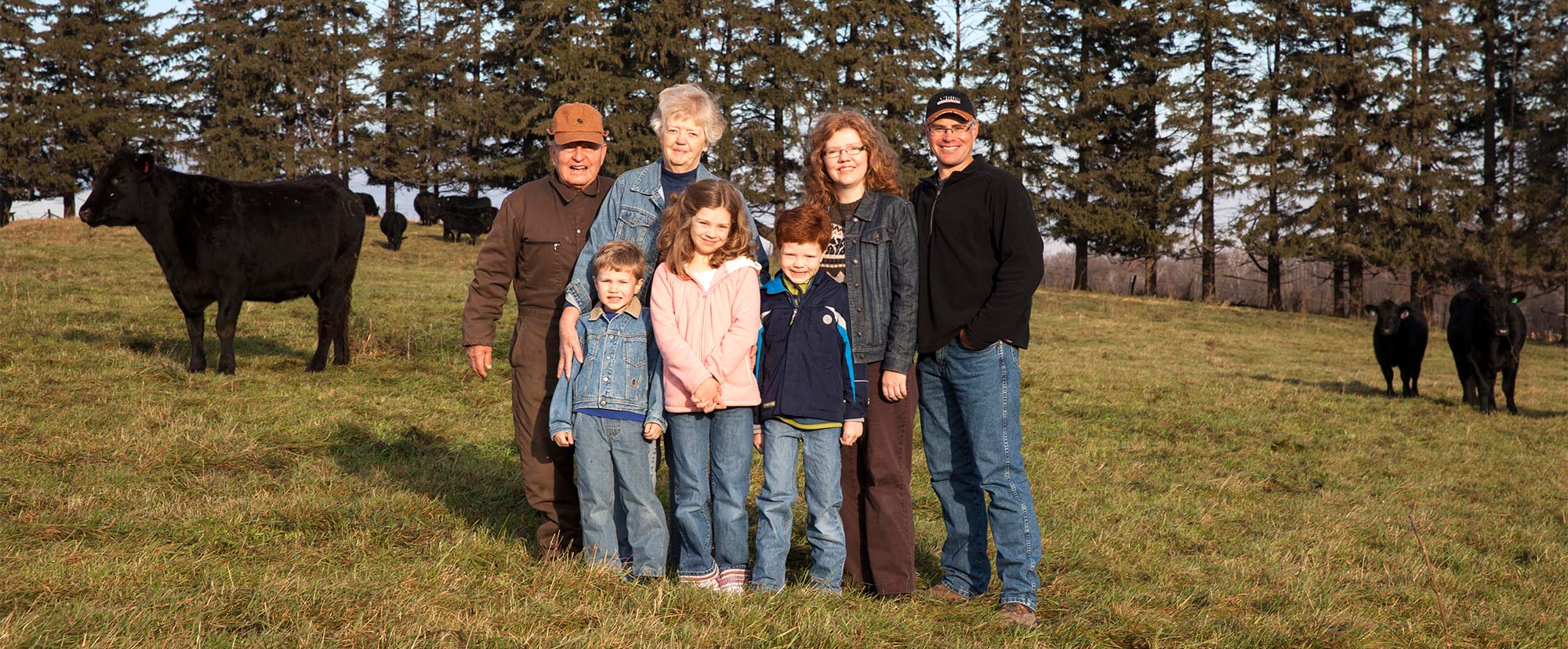
Today the family works diligently to keep pace with changing trends, and the main focus of their program is breeding docile, easy calving animals that grow and grade well. Their goal is to help customers efficiently produce high quality beef.
“We do this by producing animals that possess a desirable combination of economic traits,” Keith said. “We believe the price spread between Prime, Choice, and Select grades illustrates the importance that high quality beef has in today’s marketplace. In these challenging economic times, investing in high EPD bulls to produce high grading animals is key to putting more dollars in the farmer’s pocket.”
Genomic Testing
Keith implemented genomic testing on all of Sunnyslope’s bulls and heifers, and in a relatively short time it has proven itself to be an important management tool. An animal’s DNA can more accurately determine its actual genetics before that animal has any calves on the ground. Sunnyslope has invested in this technology to help customers purchase their bulls and females with added confidence. This data helps customers select breeding stock for the traits they are looking for in order to produce calves with increased potential.
